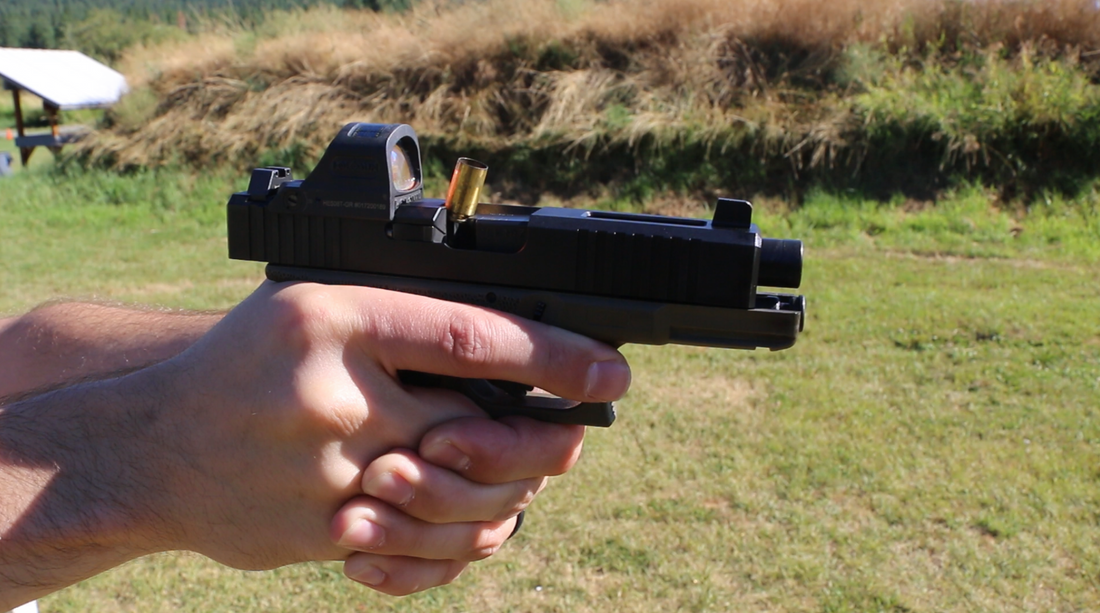
New Gun Owners - Malfunctions
Share
Stressful situations will severely affect your performance. Intense events can bring you out of your logical thinking and into the primal part of your brain. Adrenaline kicks in, logical thinking will deteriorate, and you are left with natural instincts. We lose the ability to make precise and thought out decisions.
This is important to understand when it comes to training. While working as a law enforcement officer, I experienced situations that depended on quick and precise decisions to protect life and property. When you are immersed in a stressful situation, you will resort to your training or the lack thereof.
If you are in an unfortunate situation where you need to use your handgun to protect your or someone else’s life, and you hear a click when pressing the trigger, there is a good chance that you will be under water and in a place you can’t think logically. That’s why we need to routinely train clearing malfunctions.
There are different types of malfunctions, reasons for those types of malfunctions, and multiple different solutions to deal with those malfunctions. The most common malfunctions can be divided into two groups; Primary and Secondary malfunctions.
The following malfunctions are considered to be Primary malfunctions:
Failure to Fire:
This is when the primer has been stuck on the cartridge, but it does not fire. A failure to fire can happen because of a few reasons. Possibly a spring becoming worn out in the gun or the round just has a bad cartridge.
Failure to Feed:
This is when a round is not fed into the chamber, leaving the chamber empty when you press the trigger to fire a round. This is caused by the magazine not being fully seated in the gun.
Failure to Eject:
This is when the casing is extracted from the chamber, but the casing gets stuck between the slide and the chamber. Commonly referred to as a “stove pipe” (see photo below). This could be caused by lower powered ammunition. Or it could be caused by a recoil spring that is too strong for the handgun, causing the slide to cycle faster than normal trapping the casing.

Stove Pipe Malfunction - Failure to Eject
Solution:
Primary Malfunctions are all fixed the same way, by using the tap and rack technique. When you hear a click, or feel a squishy trigger, you’ll want to hit the bottom of your magazine up into the mag well of your gun and then rack the slide. However, the Tap in Tap and Rack can be slightly misleading. You really want to hit the bottom of your mag with some weight behind it to really force it up into that mag well. So, use the heel of your palm and hit the mag catch up with some force. Your gun is a tool and it is designed to be handled roughly, so don’t worry about breaking it.
Below are some video demonstrations for what each malfunction can look like and how to solve them.
Clearing a Failure to Fire:
Clearing a Failure to Feed:
Clearing a Failure to Eject:
The following malfunction is considered a Secondary malfunction.
Failure to Extract:
This is when the extractor does not extract the casing from the chamber when the slide is cycling. A new round will usually be fed into the chamber, causing a double feed (see photo below). This can be caused by a worn-out extractor or a worn-out recoil spring that is not allowing the slide to fully cycle.

Double Feed - Failure to Extract
Solution:
The solution for a secondary malfunction is a little different than a primary malfunction. For a double feed, you will want to eject the magazine of the gun so that there is no pressure holding the casing or round in the chamber. Then you will want to cant your gun to its ported side, and rack the slide 3 times to ensure that the chamber is cleared. Insert the magazine forcefully and then rack the slide to chamber a new round.
If you are in a stressful situation, it is good to have trained your muscle memory to rack the slide 3 times to ensure that the round or casing is cleared from the chamber when you need to get the gun back in the fight.
Below is a video demonstration showing what a failure to extract might look like and how to solve it.
Clearing a Failure to Extract:
Training malfunction clearing is very important to get you back in the fight, wether in a real life self defense scenario, competition, or just shooting for fun. Training is crucial to staying proficient with your firearm.
Having quick and reliable access to your firearm when you need it most is crucial. But, securing your firearm safely to prevent unintentional access is also very important. Thats why we designed the StopBox to fill that gap in our everyday lives. If you would like to learn more about how the StopBox works click below.
Click to learn more about the StopBox.
Train hard and train often.


